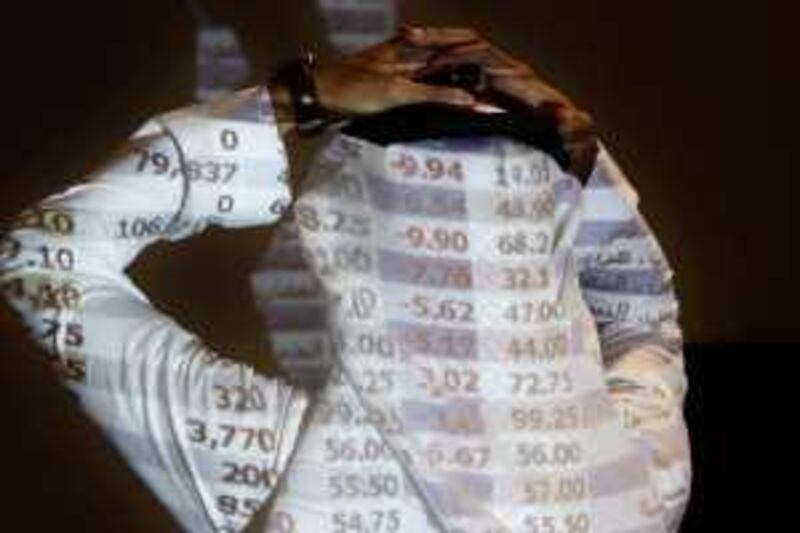Saudi banks could have lent as much as US$7 billion (Dh25.71bn) to the Saad and Al Gosaibi conglomerates, raising fears that their exposure to the family groups is even larger than previously thought. According to HSBC, Europe's largest bank, bankers in the kingdom may have lent between $4bn and $7bn to the two groups. It estimates the two borrowed at least $15.7bn from more than 100 lenders worldwide, evenly split between Middle-Eastern and international banks.
Saudi banks have shed about 20 per cent of their value since early May, when concerns about loans taken out by the Saad and Al Gosaibi groups first began to emerge. "Investors are pricing in uncertainty," said Deepak Tolani, a banking analyst at Al Mal Capital. "There is a vacuum of information as [Saudi] banks have not come out to reveal their exposure. Investors are pricing this in, it is not based on fundamentals."
Earlier reports estimated that 88 banks around the world had a total loan exposure of about $7.4bn to the two companies. At least 10 UAE banks have lent about $767.5 million in syndicated loans to the companies, according to a document obtained by The National. UAE banks may be further exposed through bilateral loans. The first signs of financial troubles at the Saad and Al Gosaibi groups began to surface in May, when The International Banking Corporation, the Bahraini banking unit of Ahmad Hamad Al Gosaibi and Brothers, defaulted on some loans, which triggered a formal debt restructuring process. The Saad Group has also moved to restructure its debt after the Saudi Central Bank froze the accounts of its billionaire founder, Maan al Sanea.
Uncertainty over the level of exposure among Gulf lenders to the two groups has hurt banking stocks across the region, although some analysts say the sell-off may now be overdone. The pricing of Saudi bank stocks could be too pessimistic and ignores any potential recoveries, according to Aybek Islamov, an analyst at HSBC. The bank upgraded Samba Financial Group, the country's second-largest bank by market value, and Arab National Bank, lifting the two stocks to "overweight" from "neutral". Samba has lost more than one third of its value since May, while shares in Arab National Bank dropped to a three-month low on Monday.
Saudi banking earnings in the second quarter are unlikely to reflect the full extent of loan exposure to Saad and Al Gosaibi, according to Al Mal Capital. "We believe the impact this quarter will be smaller and major repercussions to the reserves and non-performing loans will probably not be seen till the second half of the year," Mr Tolani said. He expects second-quarter profits to come in marginally lower than in the three months from January to March, as higher interest income and lower investment losses offset some precautionary write-offs connected with the troubled Saudi conglomerates.
Like their UAE peers, Saudi banks have also benefited from fresh deposits from government entities, helping them improve their loan-to-deposit ratios. Generally, regulators demand that lending by banks is covered by deposits available in their vaults, but a shortage of fresh funds during the financial crisis has caused many lenders to exceed these limits. uharnischfeger@thenational.ae





